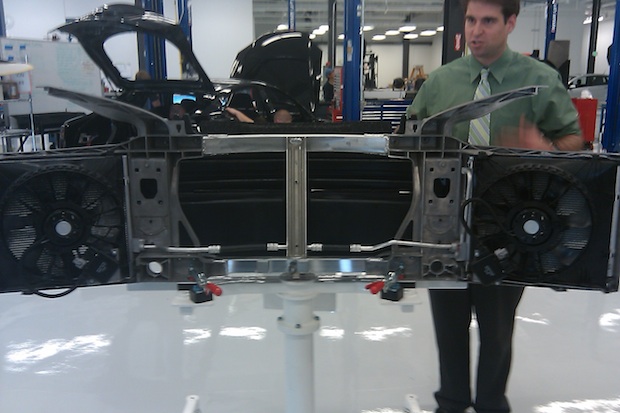The Porsche Mission E has been announced, with 800 V charging that likely will approach 320 kW power and speed.
How is it going to get the heat out of its pack? A HV charge cable doesn't mean that there's less heat released in the charging process inside the cells. Here's just the radiator assembly for the MS:

Ignoring the rest of the cooling system. How big are you expecting the cooling system on the Mission E to be?
It doesn't make sense to haul around ever-growing cooling systems inside the vehicles themselves. We need the chargers to have an effectively unlimited, super-chilled coolant reservoir which they provide down the cable (thus cooling the cable and keeping it lightweight at high powers) and run through a heat exchanger on the vehicle end before returning up the cable. Liquid-liquid heat exchangers are much, much more compact and efficient for a given amount of heat flow than radiators (liquid-air heat exchangers)


